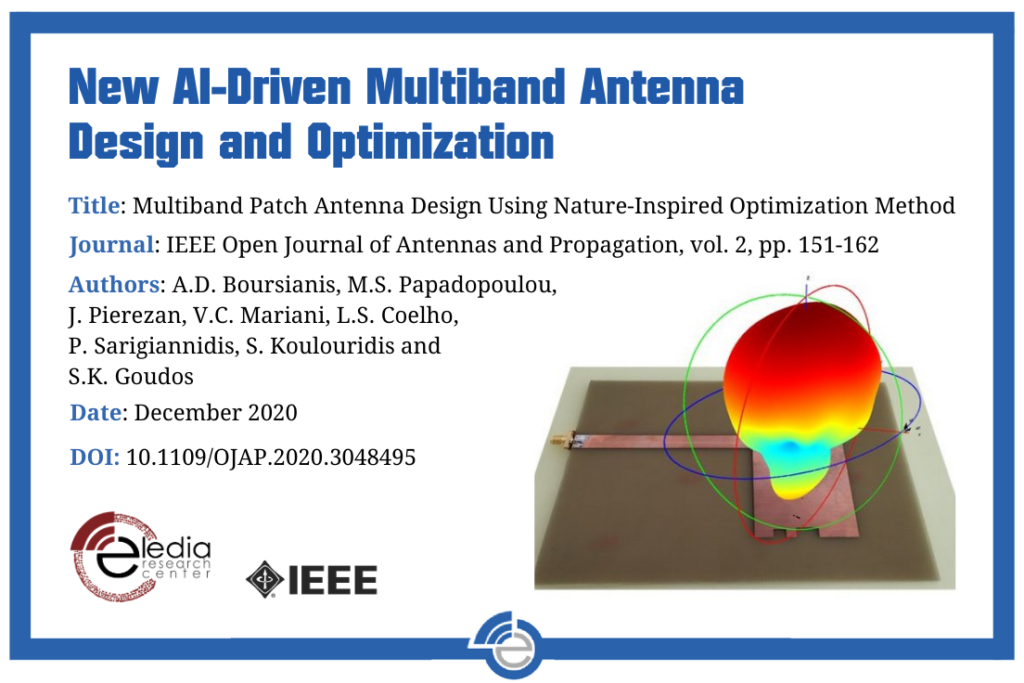The ELEDIA Research Center is pleased to announce that a new paper on “New AI-Driven Multiband Antenna Design and Optimization” has been published:
Achilles D. Boursianis, Maria S. Papadopoulou, Juliano Pierezan, Viviana C. Mariani, Leandro S. Coelho, Panagiotis Sarigiannidis, Stavros Koulouridis, and Sotirios K. Goudos, “Multiband Patch Antenna Design Using Nature-Inspired Optimization Method”, IEEE Open Journal of Antennas and Propagation, vol. 2, pp. 151-162, Dec. 2020 (DOI: 10.1109/OJAP.2020.3048495).
Abstract:
Radio frequency energy harvesting has attracted considerable interest as a technique of enabling self-powered wireless networks. This technique faces several challenges, such as the receiving and the rectifying modules of a rectenna system. Multiband antennas provide several comparative advantages against the goal of maximizing the amount of energy harvesting. In this work, we present a multiband microstrip patch antenna with three slits operating in the LoRaWAN (Long Range Wide Area Network) and the cellular (GSM-1800 and UMTS) communication frequency bands. A feasible solution of the antenna is obtained by the application of a recently introduced nature-inspired optimization technique, namely the Coyote Optimization Algorithm. The proposed antenna operates satisfactorily in the LoRaWAN (Long Range Wide Area Network) and the cellular (GSM-1800 and UMTS) communication frequency bands. Measured results of the proposed antenna exhibit an acceptable performance (multiband frequency operation, maximum gain of 3.94 dBi, broadside operation) and demonstrate features of operation, which make it a strong candidate for various RF energy harvesting applications.
The paper can be downloaded at the following link: https://ieeexplore.ieee.org/document/9311660
